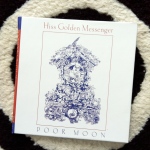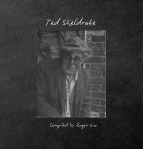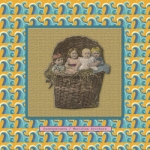Mark Fosson – kY
Big Otis Records – CD Time: 42:27
Tracks: 1) Jimmy Leg Mule 2) Loose Change 3) When We Were Young 4) Kingdom Come 5) Indian Summer 6) Dogwood 7) Simpleton 8) Cold Dark Hollow 9) Avondale Strut 10) A Drink w/ Stephen F. 11) Bad Part Of Town 12) Kentucky 13) Come Back John
Purchase CD here: https://markfosson.bandcamp.com/album/ky
Curious how things happen sometimes…
In the past few weeks I had been revisiting a number of acoustic guitar recordings from the United Artists era (early career) of Gordon Lightfoot, the vast acoustic 12 string guitar works of English composer Anthony Phillips (some recorded with Harry Williamson, like the open tunings of Gypsy Suite), Tompkins Square’s Imaginational Anthems series and even Mark Fosson’s Digging In The Dust. Then, I received a quite unexpected message from Fosson himself, asking if I’d be interested in reviewing his new album kY (named as an homage to his Kentucky roots and memories of his time there). His first album was recorded for John Fahey’s Takoma Records label in the late 1970s, but the label was sold before the album could be released (and it finally emerged courtesy of Drag City in 2006). Tompkins Square released Digging In The Dust in 2012, the 1976 demo recordings that ultimately led to the Takoma Sessions.
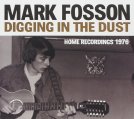
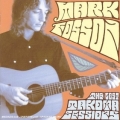
American Primitive Guitar, to some, is an obscure music genre (not to be confused with the American Primitivism art movement of the late 1890s). John Fahey’s pioneering acoustic guitar work in the 1950s developed an instrumental form of country blues finger-picking, and later attracted Leo Kottke, Peter Lang and others. In the 1960s and 1970s other techniques expanded the genre to include Robbie Basho, Mark Fosson, Jack Rose, and more recently Daniel Bachman, James Blackshaw and William Tyler (who works with both acoustic and electric guitars)…there are many others, and I am by no means an expert…just a general practitioner and admirer of many music genres and eras with some specialization in a few.
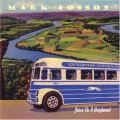
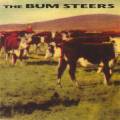
For background, Mark kindly provided a link to a recent interview at the excellent North Country Primitive website, which has some great insights on the album as well as what Fosson has been working on since those …Lost Takoma Sessions. For those interested in the specifics on the guitar tunings and instruments used on kY, I have linked directly to that interview here—it’s a great read. I have a hard enough time getting my slow fingers and feeble brain around the standard guitar tuning EADGBE let alone the many tunings like CFCFFC, so I marvel at the picking and musicianship within kY.
I am acquainted with some of Fosson’s other works spanning the time from 1976 to now, such as his solo work Jesus On A Greyhound as well as his band The Bum Steers. Fosson is also well known for the wit of his lyrics, but kY is an instrumental album, the music tells the stories, and the expressiveness and visual references emanating from the strings and fingers more than suffice in lieu of words.
kY is an album of clever and sensitive musical prose. Each piece being conceived and recorded almost spontaneously, most on first takes according to Fosson, to preserve the vibrancy of the moment. Laterally, this keeps the album unfettered of sentimentality, and refreshingly expressive even when the subject is poignant. A Drink With Stephen F, for example, went right to my core, and I felt like I had traveled through time and been a witness to the encounter—powerful stuff.
The pieces vary from portrayals of places, events and people. Four pieces are recorded with twelve-string guitar, two with banjo, one with dulcimer, two with guitars and bass (multi-track) and only two are in standard EADGBE tuning. I’m not sure what recording equipment Fosson used (analog or digital, microphones, etc.), but the quality and sound of the recording is so pure and crystalline—like a private concert in my living room. The final notes and harmonics on Come Back John just ring out, then sing on.
With the benefit of some insights from Mark Fosson (always helpful hearing it from the artist), an overview of kY, in the order of the recording:
Jimmy Leg Mule is a playful and somewhat unpredictable mule ride, with involuntary forays into mild dissonance due to that jimmy leg “condition”, along with moments of spirited progress, and occasional stubborn pauses–not unexpected from a mule. Loose Change is a somewhat gleefully reckless ensemble of guitar, bass, mandolin and slide guitar, which meanders from tight assemblage to rather “loose” chord interactions, and ultimately (and intentionally) to what author Henry Williamson referred to as a somewhat humorous “mingled despair” ending. Fosson recalls his grandparents in When We Were Young, a 12-string tribute, which varies from spirited interactions to moments of contemplation. The pace is that of a story being told, with occasional diversions (like pulling recollections from a distant hazy past), and resolved chords seem as welcome moments of reminiscing. Gradually, the themes fragment, and fade, like memories. When We Were Young periodically channels the sound of a venerable 19th century disc music box. Kingdom Come is a real place in eastern Kentucky (along with a State Park bearing the same name), and this banjo piece seems to capture the rugged yet reverent spirit of the place, although I have not been there…yet. As one might expect within a languid Indian Summer, Fosson’s 12 string jangles with a deliberate and steady heartbeat of keeping on, despite the heat.
I’ve always wanted to build a dulcimer, but for now listening to one will have to do, and Dogwood is a song of the country, and it could accompany a traditional dance or celebrate the arrival of spring, as those trees blossom. Simpleton has a cheerful and persistent aura with moments of pause for more intimate encounters. The second verse slips to a comparatively minor key, but the original balanced theme returns for the third. Fosson notes there was a man in his hometown with a sort of impairment who was a fixture. Fosson’s parents referred to this gent as the local “ambassador of good will”, others may have referred to him as something else less complimentary (we had one in my own town, we dubbed him: “the mayor”). It’s a jovial and charming portrayal.
Cold Dark Hollow is a slightly mysterious place where exploration is better fleeting with only brief moments of exploration, but not too closely, due to the chill. Fosson expressively flicks and buzzes his guitar. The second ensemble piece on the album is the 12-string guitar and bass Avondale Strut. It’s a lively gathering where folks have a good time after a spell of hard work. As I noted already, A Drink w/ Stephen F (in standard EADGBE tuning) stopped me in my tracks the first time I heard it, with its poignancy and clarity. The Stephen F is Stephen Foster, often referred to as the “father of American music” who died far too young and in a bad way (rough going back then, in the Bowery, where he died). It’s a respectful homage with an elegant and relatively unadorned melody. Some of Foster’s work has been forgotten to time and some remains well known (and is often labeled as “traditional”—do-daw, do-daw). This just exudes history and respect.
Bad Part Of Town swaggers furtively, yet it’s a cautious adventure as the banjo-ed observer passes through a neighborhood that is sometimes better avoided. Although Fosson isn’t entirely sure of the exact source of inspiration, Kentucky picks and snaps with a spirited liveliness. Closing the album is Come Back John, and is a fitting 12-string homage to mentor John Fahey. Fosson notes it was his desire to evoke Fahey’s Sunflower River Blues, and he does so with gracious aplomb.
I am often left unfulfilled by music that demands my attention. kY, however, is an album where an observant and clever artist deftly translates memories from mind to fretboard and fingers, creating authentic and fulfilling recollections. I’m not entirely sure this album qualifies exclusively as American Primitive Guitar (remember, I’m no expert), and there are no sixteen-minute free-range ramblers, but Mark Fosson instead has given us a collection of tidy and cohesive sound-memories, and they all work just fine, thank you.
Word has it that Mark Fosson has much more in the hopper, ready to record—excellent news!
Karl Culley – Stripling
Label: Sound of Jura http://www.soundofjura.com/
SOJCD1501 CD Time: About 36 minutes
Websites: http://karlculley.co.uk/
Lyrics: http://karlculleyblog.tumblr.com/
Sounds: https://soundcloud.com/karl-culley
Tracks: 1) Semi-Precious, 2) Come Over To Me, 3) School Of The Heart, 4) Spinneret, 5) The River To The Cave, 6) If We Were Free, 7) Namesake, 8) Mote, 9) Infinity Pool, 10) Whey-Faced Phantoms, 11) A.J., 12) Memory’s Like A Hunting Hawk
Youth, on the verge of adulthood, in search of meaning and perhaps companionship. Young enough and determined to look forward and hope and old enough to reflect on memories and retain some wisdom from experiences; this I interpret to be the theme of Karl Culley’s latest album Stripling. This is Culley’s fourth album, and he now lives in Krakow, Poland, where the album was recorded, but still with strong roots remaining in the north of England and Scotland. His previous albums are: Bundle of Nerves, The Owl and Phosphor.
The songs on Stripling range from hypnotic meditations to something that might cause a gathering of folks (in a pub, perhaps) to spontaneously dance (or at least vigorously toe-tap). The sonics are relatively intimate and unadorned: It’s Culley, his guitar and his voice, but it’s a deeply resonant recording. Contrary to some of his finger-style guitar contemporaries like William Tyler, Daniel Bachman or James Blackshaw there are no lengthy rambling instrumentals. The songs are penetrating and get right to their point with an atmosphere, a memory or story. While others have made comparisons to the work of John Martyn and Bert Jansch, I’ll add the early acoustic works of Gordon Lightfoot (with echoes of his subtle vocal warbles) and the technical crispness and vigor of John Jorgenson and Tommy Emmanuel.
Judging from the reflective nature of his lyrics, it seems like Culley’s work takes time to gestate, but once a piece is fledged it’s cohesive and thoughtfully formulated. There are curious ironies and juxtapositions between rhythms and words. The somewhat brief Come Over To Me seems to be based on heavy subjects, yet the meter, fingerings and melody are lively, but not exactly upbeat. Mote has lyrics (“Floating like a mote through sun or angels trapped in amber, we fall…”) that reference the abstract yet there is a steady grounded rhythm and melody. Whereas Semi-Precious, School Of The Heart, Spinneret and Namesake are reflective, even tender meditations, with the rhythmic fingerings of Spinneret reminiscent of some of Nick Drake’s work—and there is a humble elegance in Namesake.

The mood of a song and lyrics can also be direct and related like the more serious The River To The Cave—not sentimental or wallowing, but observant of circumstances. Vibrant lyrics and melody align in If We Were Free, with much of the verses being slightly-pitched spoken word observations with the final incantation “3 men are lowered into the ground…” abruptly punctuated with silence before returning one last time to the vigorous refrain (reminds me of Richard Thompson’s work).
Stripling isn’t without musing, delighting in the possibilities of enjoying a figurative or literal swim in the reverie of an Infinity Pool—it also is curiously similar rhythmically to the acoustic version of Layla that Eric Clapton recorded a number of years ago. There are also moments where advice is presented or experiences recounted as in Whey-Faced Phantoms, which evolves into a cautionary mantra and A.J. recalling the desolation of unexpected endings—in both, the melodies and harmonies echoing the starkness of a mood.
The album closes with Memory’s Like a Hunting Hawk, intensively focused with desire. There is, however, a pensive gentleness in the longing…solemn and hauntingly lyrical all at once. Also of special note are the pen and ink illustrations that decorate the CD and cover, as if from a notebook of youth: pondering, exploring, even brooding yet freely expressing. This CD made a long journey to me, and I’m glad it finally made it.
****
This is a solicited review.
My Favorites of 2014
2014 has been a year when I’ve been relatively quiet on reviews, but I have been listening to many things, and I was very fortunate to attend some fabulous concerts that I’ve documented here with brief write-ups and photos (no photos of King Crimson!). I’ve also been focused on other things, including making noise with some guitars. As in the past, my listening is concentrated on what’s available to me, which is relatively narrow in scope, but I do listen to a pretty wide array of music.
This is my list of 14 favorites for 2014 (in no particular order) and then a few special categories. Each title on the list links to the artist or record label website. Happy Listening and I hope you all have a nice Holiday season, no matter what you celebrate. Thank you for reading in 2014!
Albums
Sturgill Simpson – Metamodern Sounds in Country Music
Nick Magnus – n’monix
Tony Patterson & Brendan Eyre – Northwinds
Should – The Great Pretend
Hallock Hill – Kosloff Mansion (My review was somewhat unconventional in interpretation–a really nice album).
Gareth Dickson – Invisible String (a compilation of recent live recordings)
Hiss Golden Messenger – Lateness of Dancers
Steve Hackett – Genesis Revisited: Live at the Royal Albert Hall 2CD/DVD (a fabulous live album & DVD with excellent sound quality!)
Stephen Vitiello + Taylor Deupree – Captiva (double 10” LP)
Medeski Scofield Martin Wood – Juice
Ben Watt – Hendra
Beck – Morning Phase
Levin Brothers – Levin Brothers (It’s only taken decades, but the Levin brothers got together and made a really marvelous jazz album)
Rosanne Cash – The River & The Thread
Soundtrack
Robin Guthrie and Harold Budd – White Bird in a Blizzard
Boxed Sets
Anthony Phillips – Harvest of the Heart (Anthology Boxed Set): Unlike the recent R-kive Genesis box set, Cherry Red knows how to put together a proper anthology, complete with many tracks of never-before heard music from AP’s archives.
Jason Molina – Songs: Ohia – Journey On (7” 45 RPM Compilation Box Set, a really beautiful set, probably rarer than hen’s teeth by now.)
King Crimson – The Elements (Tour Box, archive, live and some new material as a companion to the 2014 US Tour)
Reissues (Vinyl)
East River Pipe – The Gasoline Age (vinyl reissue, my introduction to the brilliant songs of F. M. Cornog when it was first released on CD in the early 1990s)
Lambchop – Live at XX Merge (I’m so happy that Merge Records decided to release this in honor of their 25th Anniversary. Looks like the LP is out of print for the moment.)
EPs
William Tyler – Lost Colony
Olan Mill – Half Seas Over (Live performances 2012-2014)…too short for an album, too long for an EP, but what the heck!
An Accidental Concert Photo
Hiss Golden Messenger – Lateness of Dancers
Merge Records MRG 523 LP CD FLAC and MP3 Time: About 43 minutes
1) Lucia 2) Saturday’s Song 3) Mahogany Dread 4) Day O Day (A Love So Free) 5) Lateness of Dancers 6) I’m A Raven (Shake Children) 7) Black Dog Wind (Rose of Roses) 8) Southern Grammar 9) Chapter & Verse (Ione’s Song) 10) Drum
Artist Information http://www.mergerecords.com/hiss-golden-messenger Samples: http://www.mergerecords.com/songmgr/radio.php?album=60195&song=61865
Saturday’s Song:
I got to know Hiss Golden Messenger’s (M. C. Taylor) music after perusing the online catalog of Tompkins Square, where I had purchased William Tyler’s solo album Behold The Spirit (prior to his Merge Records release Impossible Truth). I ordered the HGM album Poor Moon, and that was all it took for me to go off hunting for more, which led me to his 2013 album Haw (on Paradise of Bachelors) and ultimately to his first complete album Bad Debt, recorded in his kitchen shortly after the birth of his son in 2009. There are overtones of concern in that album, since it was created as the global economic crisis was hitting financial markets and was having tangible effects on people. It took Bad Debt a long time to see the light of day due to a warehouse fire during the London riots a few years back—most of the original CDs were lost. Amanda Petrusich has a brief essay about Taylor at the Merge Records link above, and it will give further insight on the roots of his music and her impressions.
Lateness of Dancers is quieter and a bit slower in pace compared to Haw and the recording is more intimate, even introspective with some of the qualities of Bad Debt. It includes some musicians from the previous albums along with primary collaborator Scott Hirsch (most often on electric and bass guitars) and William Tyler. Taylor’s songs appear to be largely personal self-reflections, laments on vulnerability, restrained joy, explorations of faith and optimism. This album sounds to me like it’s rooted in the early to mid-1970s in sound.
Taylor’s voice is at times like a melodic version of Bob Dylan as on Lucia, which has a gentle sway to it (as do other songs on the album). I immediately felt like I was back in the early 1970s during Saturday’s Song (a time when I listened to albums for hours on end). Saturday has a Jackson Browne Doctor My Eyes vibe to it and is instantly familiar and comfortable. The spirit of Mick Fleetwood was present for the back beat of Mahogany Dread along with an early incarnation of Fleetwood Mac (for those of us old enough to remember!). No doubt, Taylor’s son’s voice opens Day O Day (A Love So Free) with his self-assured proclamation (present in younger children) of the song’s title. It’s quiet and contemplative and the subtitle gradually becomes an incantation of joy. Lateness of Dancers is one of the more serious sounding tracks on the album, the other being Chapter & Verse (Ione’s Song), which is revealing and very contemplative. I’m a Raven (Shake Children) growls with a heavy beat and is a contrast to the slow-dance quality of Black Dog Wind (Rose of Roses). Southern Grammar channels a gentler (yet still funky) version of Lowell George and Little Feat of the Dixie Chicken era (oh, how I miss Lowell George).
The album ends with a lightly orchestrated version of Drum (that first appeared on Bad Debt) and it has the spirit of a recessional, and it sounds hopeful “I’ll rise in the morning, take the good news and carry it away…” Lateness of Dancers is good news indeed, and it seems like Hiss Golden Messenger has landed at a good spot with Merge, where his work will hopefully get to a wider audience, and they will let M. C. Taylor continue unencumbered to do what he does best: write thoughtful and beautifully crafted songs.
Spring At Last! What’s Spinning at Studio wajobu
Lest you all think that I only listen to Ambient and Progressive Rock music, I also listen to many other genres including Country music…wait, WAIT, don’t close the window–you won’t regret it!
Sturgill Simpson – Metamodern Sounds in Country Music (High Top Mountain): This new album by SS is the real deal. Great country songs about real stuff with great music, and even better the first single released is Turtles All The Way Down (with a nod in the title to Stephen Hawking) and it’s deliciously psychedelic with reverb, phasing-shifting and Mellotron. Give it a listen:
Shearwater and Sharon Van Etten – Stop Draggin’ My Heart Around (SubPop): From Record Store Day 2013, I missed this single, but I found it on RSD 2014 in the back of the singles bin—aha! The A side is by Tom Petty (which I can take or leave), but the gem is Jonathan Meiburg’s A Wake For The Minotaur—it’s just plain stunning. This live version features vocalist Jesca Hoop.
Songs: Ohia – Journey On Collected Singles (Secretly Canadian): Not much I can say about the tragic loss of Jason Molina that hasn’t already been written. Thank goodness we have Molina’s musical legacy, including his last band Magnolia Electric Company—great songs and music and many of subjects of Molina’s songs turned out to be prophetic. Long before he died, his last label Secretly Canadian was discussing releasing a boxed set of the early singles of Songs: Ohia, many of them quite rare and long out of print. Unfortunately Jason didn’t live to see it. It’s a beautiful blue cloth wrapped boxed set of nine 7” singles with a separate book of the original artwork and song histories and a CD compilation of all the singles. These were available on Record Store Day 2014 and they disappeared quickly…I was very fortunate to find a copy. Here’s a video on the set. If you can find one, buy it, you won’t regret it.
Mutual Benefit – Love’s Crushing Diamond (Other Music Recording Co.): Bob Boilen from NPR’s All Songs Considered got me to this album. Part folk, part psychedelic and reminds me a bit of a softer Grizzly Bear (the band) at times.
Ben Watt – Hendra (Caroline – Unmade Road): I’ve been a fan of Everything But The Girl (ETBG) since their early days and then Tracey Thorn and Ben Watt put that project on an indefinite hold while they pursued other musical endeavors and had a family. Tracey has released a number of excellent solo albums and this is Ben’s first solo album—very introspective. My favorite song is The Levels and David Gilmour plays slide guitar. This is a live version:
Lee Gobbi – Purple Prose (www.leegobbi.com): Lee is a fan of Progressive Rock music and the influences are clear on his self-produced debut album of mostly original songs with guest appearances by alums of the original 1970s and 80s Steve Hackett band. There are strong shades of The Beatles, ELO and the vibe of George Harrison’s work in this album. There are a couple of covers, a Stu Nunnery tune Madelaine (remember Stu Nunnery from the early 1970s?!) and a haunting version of Nick Drake’s Parasite. A brilliant first album, and I hear that there is a second album in the works—stay tuned. I’ll post some sound samples when they are available.
John Pizzarelli – Double Exposure (Telarc): This album from 2012 is of song interpretations and some pairings by Jazz guitarist (and son of Bucky Pizzarelli) and Popular song-man. The album is largely covers, with an original by Pizzarelli and his wife Jessica Molaskey Take A Lot Of Pictures (picking up where Michael Franks left off with his song Popsicle Toes). My favorite is the soulful Neil Young song Harvest Moon.
Elaine Radigue – Trilogie de la Mort (Experimental Intermedia): When I reviewing Nicholas Szczepanik’s latest album Not Knowing, I noticed the dedication to French composer and electronic music pioneer Elaine Radigue (born 1932) and I was reminded of this 3 CD trilogy that was composed as a tribute to her son upon his death. It’s very minimal with gradual layers in parts and intense at others. Like most of her other work it was composed on an Arp 2500 modular synthesizer. Since 2001 she has composed on and for primarily acoustic instruments.
Superchunk – I Hate Music (Merge Records): This is the band that started Merge Records (http://www.mergerecords.com/i-hate-music) and if you have a chance read their book Our Noise – The Story of Merge Records. I heard FOH (stands for Front of House) just before the album was released and ordered it instantly (and then waited, since it was a preorder). Be careful, it’s raucous!
Tomotsugu Nakamura – Soundium (Kaico): I have Tench and Words On Music label’s Marc Ostermeier to thank for getting me to Nakamura’s work. He is a sound artist from Tokyo and Soundium is an album of microtones, springy and glitchy rhythms and fractional sound samples. The sounds and instrumentation are so pure—this is a great album and delightfully quirky at times. http://naturebliss.bandcamp.com/album/soundium
Lateral reference: Soundium reminds me of the absolutely enchanting album In Light by 12k label’s Small Color (and I think that everyone should buy this album): http://www.12k.com/index.php/site/releases/in_light/
Federico Durand – El estanque esmeralda (Spekk): I find this album to be Durand’s most melodic work so far. Many of his previous albums and collaborations focus on longer form field recordings combined with bells, wind chimes and other instrumentation. This album concentrates on childhood memories of places and times, presented in delightfully concise pieces . The three latest Spekk label releases are in the larger format CD sleeves and they are a welcomed change from small digipacks, jewel boxes or (worse yet) plain sleeves. The music AND the art matters. http://www.spekk.net/catalog/esmeralda.html
Celer – Zigzag (Spekk): Will Long AKA Celer is well known for his extensive ambient works and soundtracks. This is a more rhythmic (albeit subtle) electronic work. Have a listen: http://www.spekk.net/artists/celer.html
Melodia – Saudades (Kaico): Melodia is a collaboration of Federico Durand and Tomoyoshi Date. I missed the original LP on the Own Records label, so I was quite pleased that Kaico released a CD version. More here: http://kaicojapan.tumblr.com/
Opitope – Hau (Spekk): This is the first album by Tomoyoshi Date and Chihei Hatakeyama. Micro-tones, found sounds, ambient and field recordings along with instrumental (acoustic and electronic) improvisation make up Hau. The album is charmingly subtle at times and crystalline at others. The pieces are observations and explorations of places and experiences. http://www.spekk.net/artists/opitope.html
Opitope – Physis (Spekk): This is the latest CD from Opitope. The pieces are longer form than on Hau and curiously feel more like minimalist Jazz, at times. The instrumentation is more direct (recognizable), yet the environmental and visual influences are still present.
William Tyler – Lost Colony 12” 45 RPM EP (Merge Records): Unlike Tyler’s recent (and fabulous) album Impossible Truth, which is a solo guitar album, this EP is a band release and Tyler reinterprets the track We Can’t Go Home, covers Michael Rother’s Karussel and the entirety of Side A is devoted to Whole New Dude. Dude is a ramble with a meandering opening (with excellent pedal steel by Luke Schneider) and then sets off on a driving rhythm (drums, guitar, pedal steel and bass) for the duration. It’s a traveling song, heading out “there” to explore, and Tyler lets it rip towards the end. http://www.mergerecords.com/lost-colony
Orcas – Yearling (Morr Music): Orcas are Benoit Pioulard (another guise of Tom Meluch) and Rafael Anton Irisarri. This is the follow-up to their first eponymous collaboration in 2012. Yearling is part environmental instrumentals and part songs. The opening instrumental track Petrichor reminds me of Brian Eno’s The Spider and I from the 1977 album Before and After Science. I complained about the tone and mastering of BP’s most recent album, but this album sounds MUCH better. The songs are lush with vocals and harmonies by Pioulard—really nice music with oft-catchy refrains.
http://www.morrmusic.com/artist/Orcas/release/1705
twincities – variations for the celesta
Eilean: [02] – Eilean Records: CD-R (an edition of 80) Time 48:16
Tracks: 1) Prelude in E Major, 2) Evenings Wait; The Morning’s Break, 3) Early Ferns, 4) The Sun Looks Quite Ghostly When There’s A Mist On The River And Everything’s Quiet, 5) Faint Whirs Of The Smallest Motor, 6) They Carried Teapots And Tiny Gas Canisters, 7) A Ship’s Bell (Sings), 8) The Weight Of The Frost On A Branch, 9) And The Guitar Plays War Hymns, 10) (Sings)
Long ago I found myself curiously attracted to an old celesta (celeste) in the back corner of my high school band room. I’d plug it in when I was sure that no one was around and adjust the controls and the small piano-like instrument made pleasantly sonorous yet mysterious sounds: belltones with alluring sustains and tremolos…
Eilean Records is a new French-based label run by Mathias Van Eecloo and twincities – variations for the celesta is the label’s first release (although ironically labeled [02]). Long Islander (New York) Fletcher McDermott creates music in his basement studio in the guise of twincities (funny, when I think of “Twin Cities” I think of Minneapolis/St Paul, Minnesota).
Eilean is Scottish Gaelic for Island and the label’s works will each relate to a point on an imaginary map with up to one hundred predetermined locations. Coincidentally, McDermott lives on an island (albeit a rather large island). Eilean releases will vary in quantities from 75 to 200 physical copies and there will be up to 100 releases with hand made covers and related artwork in this map series. Connections to the place where the music is created will be memorialized with an image of a small bottle containing the soil from the musician’s locale. On the reverse of the image with be the map quadrant assigned to the musician. Each release will be a part of the puzzle of the overall map…the music connected to the artist, a point on the map and a small vial of soil. In effect, an imaginary hybrid island with a small yet tangible existence. Islands of the imagination, islands of the mind, perhaps even islands of isolation. Have any of you ever read the short story The Man Who Loved Islands by D. H. Lawrence?
I’ve noted before that I’ve listened to shortwave and ham radio operators for decades and in some respects this album is like roaming the radio dial late into the night on an old analog shortwave set using the fine-tuning knob. The music is like traveling and it takes the listener to different places. The feeling of being taken on a tour through a shortwave realm isn’t literal like in Kraftwerk’s song Radioland (from their 1975 album Radioactivity), rather it’s more subtle in the background and doesn’t distract from the aura created by the music and other sounds. The album at times also evokes Godley and Creme’s song Get Well Soon from the 1979 album Freeze Frame (waxing rhapsodically about Radio Luxembourg and Radio Caroline late into the night), although that song is more melodic. The celesta isn’t the dominant sound generator in this album, but each piece has a strong thread weaving throughout along with other well-disguised instrumentation, found or ambient sounds and faint voices. Rather than repeat the track names, I’ll just reference the track number in my overview:
1) variations opens with rapid-fire automated Morse code, soothed with slow comforting celesta responses. 2) The celesta is transformed into restful wind chimes with long passages of deep resonant tones and distant faint melodies. There are some comparisons to the recent works of Kane Ikin’s otherworldly explorations (seek out his recent 12k label releases). 3) Is like hanging on the edge of a dream while awakening in the misty early morning light—the calm and the quietude. The celesta treatment is like it could be from portions of the soundtrack to Forbidden Planet—rather mysterious, almost ominous.
4-7) This collection of tracks seems like a suite, at first sonorous, gentle and deep tones and mysterious atmospheres (in time, a slower Morse code reappears), transitioning into an edgier realm (6) and finishing in a gritty drift across the radio dial, sharper sounds with kalimba-like percussives. 8) Sways gently and is the most peaceful track on the album. It evokes some of the feeling of Robert Rich’s recent album Nest. 9) This piece is a broad soundscape (in some respects like those created by the band Lambchop as links between songs…William Tyler’s moody electric guitar drones). The celesta is treated like chimes sounding like church bells, in memoriam. 10) A gritty close, like the beginning, and the distant music returns one last time from a far away island.
Eilean Records is off to a fine start with twincities variation for the celesta. Visit their website soon for the next planned destination which will be released on 5/5/14 and monthly thereafter.
[vimeo http://vimeo.com/86956807]
Photo of twincities by TJ Boegle
****
This is a solicited review.
Deep Winter Listening – Icebound Edition
I think I’m ready for Spring, but since that’s expecting too much at this point I’ll just stick to what’s spinning here lately…
Tompkins Square Records – Imaginational Anthem Volumes 1 to 5 (boxed with William Tyler’s Elvis Was A Capricorn, live performances) and Volume 6 (Tompkins Square TSQ 2790 and 2851): I purchased this on intrigue after a few other TSQ label purchases and upon learning that Hallock Hill’s Tom Lecky had a piece on Volume 5. It’s a wide-ranging collection of mostly acoustic guitar (American Primitive “fingerstyle”) works by some musicians well known (Max Ochs, John Fahey, James Blackshaw, Jack Rose, William Tyler, Daniel Bachman and Robbie Basho) and others more obscure. The WT live CD is a bonus in the box, which is not sold separately—his wizardry is hypnotic. Volume 6 has 14 historic recordings transferred from 78s. It’s a really fascinating collection.
Robert Rich – Morphology (Anodize AD 1304): After really enjoying Rich’s last CD Nest, I thought I’d try this 2010 live recording (released in 2013). At some sections it’s more rhythmic than Nest, but this again takes me back to the Modular Moog days of Tangerine Dream’s double live album Encore. Turn down the lights, turn up the volume and take a ride.
Lambchop – Nixon (MRG175): This is a reissue of the 2000 release to help celebrate Merge Records’ 25th anniversary. I opted for the CD, which includes a second CD White Session 1998 “How I Met Cat Power” recorded in 1998 (Lambchop “represented” by Kurt Wagner on vocals, tape loops and guitar recorded for Radio France). Gone is the jewel box of the original and everything is contained in a double gate-fold sleeve with enhanced artwork. This album was my introduction to Lambchop and the 5 track bonus CD (with 4 tracks from Nixon and The Saturday Option) is like having a private concert by Kurt in your living room.
The 78 Project – Volume 1 (http://The78Project.com – 78P-001): Somewhat like the Black Cab Sessions, this is the first of what looks like many forthcoming albums, most of the songs are traditional, recorded in one take on one blank lacquer disc on a 1930s vintage Presto direct-to-disc recorder working at 78 RPMs in full ruby-cut monaural with ambient noise and all. Artists on this first volume include Richard Thompson, Loudon Wainwright III, Rosanne Cash and John Leventhal, Marshall Crenshaw and 9 others. The LP is mastered for 33-1/3 RPM. Old school and a fascinating concept.
Porya Hatami – Shallow (Tench TCH 06): Recorded in Sanandaj Iran, Hatami’s latest album is a gorgeous instrumental work with three extended pieces (Fen, After The Rain and White Forest) of field recordings, loops and minimal instrumentation that are hypnotic, peaceful and produce a strong sense of place, and an escape.
The Autumn Defense – Fifth (Yep Roc YEP-2354): The core of the band is still Wilco’s Patrick Sansone and John Stirratt and this album for the most part picks up where their last album Once Around left off—well crafted songs with a relaxed but catchy vibe (some feel like they’re from the 60s and some could be from the 70s–make me think of Graham Gouldman’s work.)
Hiss Golden Messenger – Poor Moon and Bad Debt (Tompkins Square 2660 and Paradise of Bachelors PoB-11): I got to HGM by poking around in TSQ’s back catalog and that led me to these two albums by the core of M. C. Taylor and Scott Hirsch (the latter being a reissue of Taylor penned and recorded songs which were a reaction to the 2008 financial crisis). Stark at times, but I was immediately drawn into the genuine nature of the lyrics and roots-like instrumentation and arrangements. Real solid albums and I’m looking forward to their 2013 album Haw when it arrives.
Steven R. Smith – Tableland (Emperor Jones EJ35CD website: http://www.worstward.com/): Smith has a number of musical personas and in addition to music he is an instrument builder and print maker. I’m most familiar with one of his aliases, Hala Strana (that work is more eastern European and traditionally-rooted). Tableland is a (sadly, this 2001 CD is out of print, but download is available here: http://worstward.bandcamp.com/album/tableland) haunting and somewhat moody collection of largely electric guitar-based soundscapes that could easily be a soundtrack for a roadtrip to a long forgotten territory.
Rosanne Cash – The River & The Thread (Blue Note Records B00195t202): Some musicians and artists with well-known predecessors often have periods of distancing themselves from those strong roots, breaking away to establish themselves. Rosanne Cash (whose dad was Johnny Cash) and John Leventhal have produced a beautiful album of songs tracing RC’s memories and influences that have gradually resolved with time and understanding of the struggles of humble beginnings and the trials of fame. The song Night School is stunning. Get the CD version with the bonus tracks.
Ben Lukas Boysen – Gravity (Ad Noiseam ADN168CD): The striking cover illustration drew me into the wake of this album and Boysen’s placid rhythms and harmonious aura suspended time.
Harold Budd – Avalon Sutra (Darla DRL 285): This is a completely remastered (by sound engineer Bradford Ellis, who has worked with Budd for 30 years) reissue of the Samadhisound double CD that was first released in 2004 (often referred to as Harold Budd’s last album before he retired from composing and recording—lucky for us it was a false alarm!). This double CD has new artwork and photographs, and the recordings have greater depth and clarity.
Harold Budd & Jane Maru – Jane 1-11 (Darla DRL 287): This is a two disc CD and DVD video release. The CD is the same as DRL281, and the second disc includes video companions (by artist Jane Maru) to each of the tracks on the album. Some of the videos are a very light touch with minimal effects and others explore colors, depth of field, transformation and the passage of time. I wrote last year about this very special Harold Budd album. Jane Maru did the cover artwork for this and the original CD release—she also does some really wonderful batiks.
And let’s not forget a favorite of mine – Kraftwerk!
I’m ready for the Spring Thaw! Happy listening.
Lucky 13 – My Favorites This Year…
…A Not-So Comprehensive List
2013 has been a quirky year; for a time I found that inspiration had vanished and I wasn’t interested in listening to music or writing about it at all (a rare occurrence). I’m guilty of having purchased less music this year (an economic curtailment of necessity). Nonetheless, there has been some great music in 2013 (and my slice is a tiny piece of what’s out there). This year I read some music-related memoirs by artists whose work I’ve admired for decades (Burt Bacharach, Neil Young, Michael Feinstein–of his time spent with Ira Gershwin and other books), some histories of Jazz Standards, Blues, Rock and Roll, and records labels (including one of my favorite indie labels, Merge Records). I was also fortunate to attend a number of live shows, and I’ve posted photos of some of those throughout the year.
Is it me or have record labels and artists reduced their output somewhat? Is it a lull in a normal cycle or a sign of the economic times?
Some of the music on this list will be familiar if you have checked-in to read my reviews and some I have not reviewed. I also have some albums I’m still listening to and I haven’t decided if I’ll write reviews for them (an archival release by The Books, La Luz’s first LP, Mary Lattimore and others). One album in particular that I’ve enjoyed recently (although it was NOT released this year) is a live archive solo recording of Neil Young at the Canterbury House in 1968 entitled Sugar Mountain—the album is mostly material that Young wrote or co-wrote with Buffalo-Springfield, and it was recorded right after Buffalo-Springfield broke-up.
A double live CD has also just arrived of one of the last (very lively hot Jazz) gigs played by the house band at Eddie Condon’s in New York City before it closed in 1985—One Night at Eddie Condon’s (Red “The Commodore” Balaban’s Condon Band), with Ed Polcer, Dr Palu Squire, Jack Maheu, Tom Artin, Bobby Pratt, Dave Shapiro and Danny D’Imperio, recorded by Doug Pomeroy)–thanks to Tom Artin for sending this great piece of Jazz history!
****
The Lucky 13 (all albums purchased–not promos)
Yellowbirds – Songs From The Vanished Frontier – Royal Potato Family: This is my favorite album of the year—just love it–the vibe, the sounds. Please see my June review.
Harold Budd – Jane 1-11 – Darla: The music with companion videos release won’t be available until early 2014, but another beautiful album from HB. I reviewed this album in June, as well.
John Scofield – Überjam Deux – Emarcy: I reviewed this album in August—an excellent follow-up to the original Überjam, and a great vibe with Jazz, Blues and more!
Steve Hackett – Genesis Revisited: Live At Hammersmith (CD/DVD) – InsideOut: As I noted in my review of last year’s studio release of Genesis Revisited II, I feel like Steve Hackett is the keeper of the spirit of the work of Genesis during the 1971 to 1977 era. So many of the earlier recordings (weak on the engineering and mix, except The Lamb) were greatly improved and enhanced, and this comprehensive 3 CD and 2 DVD set documents the fabulous and memorable Hammersmith show in May of 2013 before the band traveled to the US for their fall tour. The SH Band will tour further in support of this in the southeastern US and Europe and Russia is 2014 (bassist Lee Pomeroy will be replaced by Nick Beggs, a familiar face to Hackett Band fans…I really enjoyed Lee on this tour, he really brought out just how musical Mike Rutherford’s bass lines are in these earlier Genesis classics).
Wire – Change Becomes Us – Pink Flag: I was a big fan of Wire in the late 1970s and then I just plain lost touch with their work. The Words On Music label has a compilation of reinterpretations of their well-known single Outdoor Miner from their 1978 Chairs Missing album, and then I noticed a post earlier in the year by Marc Ostermeier (of the band Should ,and WOM and Tench labels) that a new album was forthcoming.
Juliette Commagere – Human – Aeronaut: Late in 2010 Commagere released her album The Procession on Manimal Records—a diverse combination of songs with dense and gorgeous vocals instrumentation—part art-rock, progressive and electronica. Commagere has returned with another beautifully recorded album of lush songs with her strong vocals and support from husband Joachim Cooder, Ben Messelbeck, Amir Yaghmai, Ry Cooder and recorded by Mark Rains and Martin Pradler. The sound is deep, full, inventive and often fantastical—she is doing her own thing, and I love it (catchy melodies and all). There are times when she channels Elizabeth Fraser as on Low.
Roger Eno – Ted Sheldrake – Backwater: Thirty Years after his first work Apollo with brother Brian and guitarist Dan Lanois, Roger Eno compiled this tribute to friend and neighbor, Ted Sheldrake. Although I reviewed this album in November of 2012, it wasn’t officially released until January of this year.
Cock & Swan – Secret Angles – HushHush: I am eagerly awaiting my blue vinyl (Kickstarter-funded) copy of this digital release that I reviewed in August.
The Bryan Ferry Orchestra – The Jazz Age – BMG: Back in March I did a brief comparative analysis of this album and Steven Wilson’s latest (see below). I think this is a really spirited and fun reinterpretation of earlier works by Roxy Music and BF. Being a lover of old acoustically recorded 78s of the pre-Jazz and Jazz ages, I get this.
Steven Wilson – The Raven That Refused To Sing (and Other Stories) – kscope: A strong album (I think it’s Steve’s best to date), beautifully recorded and engineered by Alan Parsons. My favorite song is Drive Home.
William Tyler – Impossible Truth – Merge: A brilliant solo guitar album by Lambchop and Hands Off Cuba alum, and a great follow-up to his previous Tompkins Square release Behold The Spirit. I reviewed this album in March.
Celer – Viewpoint – Murmur: As I noted when I reviewed this album in April, I find this album absorbing and romantic—a great piece for getting lost.
Ron Sexsmith – Forever Endeavour – Cooking Vinyl: I love Ron’s work–started listening in 1997 with his third album Other Songs. Forever Endeavour is sparsely arranged, but strings, horn, percussion, pedal steel or electric bass are right there when they’re needed. Other than that, the songs are Ron’s voice, and his acoustic guitar. He has a gift for wordplay and expressing emotions with a deft efficiency that flow so naturally with his melodies. Some songs on Forever Endeavour are ironically upbeat, like Nowhere Is and Snake Road—in a sense, keeping the faith. The CD has two bonus tracks (songs written with Don Black and recorded by Don Kerr), Life After A Broken Heart and Autumn Light, and they are just plain gorgeous additions to this album. Here’s a live recording of Autumn Light.
****
Two of my favorite new discoveries in 2013
Meridian Brothers – Desesperanza – Soundway: I heard about Meridian Brothers in an NPR Alt Latino podcast and was instantly hooked by this band from Bogata, Colombia–buying as much of their back catalog as I could find in physical releases. Their music is surreal and playful—a combination of Joe Meek, Esquivel and Raymond Scott.
La Luz – Brainwash (7″) – Suicide Squeeze: This is a single (my version is on clear vinyl) that was released by La Luz just prior to their new album It’s Alive—It’s infectious and fun! I got to La Luz thanks to Johnny Goss (one half of Cock & Swan).
Review: William Tyler – Impossible Truth
Merge Records CD MRG465 – Time: About 54 minutes
http://www.mergerecords.com/artists/tyler%20william and http://www.sebastianspeaks.com/
Tracks: 1) Country Illusion, 2) The Geography Of Nowhere, 3) Cadillac Desert, 4) We Can’t Go Home Again, 5) A Portrait Of Sarah, 6) Hotel Catatonia, 7) The Last Residents Of Westfall, 8) The World Set Free
I posit that William Tyler is a thinker, and is perhaps more comfortable expressing himself with music than with words (although his spoken thoughts on the Merge teaser video have a distinct and interesting clarity). Tyler has worked in a number of bands prior to his solo albums including the Silver Jews, the ongoing experimental collective Hands Off Cuba and Lambchop (in addition to his record label, Sebastian Speaks). Tyler’s work brings a wide range of colors and moods to Lambchop’s sound, where he has been a principal guitarist for many years. Impossible Truth seems to me to be a more cohesive and mature work than his last solo album on the Tompkins Square label, Behold The Spirit. Nonetheless, I urge readers to seek out this very strong album.
The titles of the tracks on this album are like the names of short stories, and from the moment the cord is pulled on the first note of a track we are thrust right into the middle of the scene, without shyness or any lack of confidence. It almost feels like Tyler propels a well-worn yet vibrant flywheel at the start of each piece, and from that moment he is shaping and sculpting the sound and mood until the story is told.
Country Of Illusion starts mysteriously and sounding rather exotic (as if from a foreign land, sitar-like). There are sweeping passages envisioning a changing scene and then there are pauses (almost like a moment of contemplation) before moving through a sonic curtain and then the next passage of the tale. Some tracks show a greater tenderness (with solo acoustic guitar) than others like We Can’t Go Home Again or A Portrait Of Sarah (although musically the latter is quite adventurous, as are many relationships). The Geography Of Nowhere has a resonant otherness of being on the edge of consciousness and sensing the tangible without being able to actually reach it. There are others like Cadillac Desert and Hotel Catatonia that present vistas as broad and intense as a Montana sky (and I never knew what a big sky looked like until I saw one). The fretwork, picking and phrasing are tracing the landscapes and wrapping the listener in the gentle or gusty breezes of sound.
The Last Residents Of Westfall sounds like a scene from a dying or deserted town as the music pans to each of the buildings in the village, all with their own story to tell, some jaunty and others subdued. The closing track of the album, The World Set Free is the most reflective, but it enlivens joyfully as the track progresses—the acoustic bass being a steady and forthright heartbeat, and finally William Tyler releases to a growling close. I am trying to resist comparisons, but the opening section is similar to the instrumental sections of Nick Drake’s Bryter Layter.
Tyler disguises his guitars as many different instruments, and his musicianship and intense fingerings give a sense that more than one set of hands is at work, yet there is never a sense of Tyler playing a guitar hero—my guess is that he sees himself as quite the opposite. Just like Lambchop, William Tyler blurs the distinction of musical genres; first this is an instrumental acoustic and electric guitar album, there are hints of twang, country and roots in it, but also some blues, folk and rock and roll. Merge Records has a wide ranging catalog of musicians and has been around for more than two decades. I just finished reading and thoroughly enjoyed their biography of the first twenty years of Merge, Our Noise. Even though William Tyler has been part of the Merge family for many years in his work with Lambchop, I’m thrilled that he has released this latest brilliant solo album with Merge. This is an album that I highly recommend.
Merge Records just posted this reinterpretation (homage?) to the film Two Lane Blacktop with A Portrait of Sarah as the soundtrack.
The To-Listen Stack
I’m slowly working my way back to a stack of LPs that I have been avoiding due to the summer heat. My main turntable is connected to a pair of tube amps, and in hot weather tube output only makes a warm room…hot! So, time to move a “sand amp” into place until cooler weather. Here’s what I’m spinning:
Kink Gong – Xinjiang: An “ethno electronic collage” with incredible field recordings combined with electronics recorded by Laurent Jeanneau in China. Jeremy Bible at Experimedia recommended this in one of his (what I now call “dangerous Friday e-mails”). Available at: http://www.experimedia.net/index.php?main_page=product_music_info&products_id=5182
Hands Off Cuba – Volumes of Sobering Liquids: More sound experiments from a number of musicians who have worked in Lambchop over the years. Available at: http://www.sebastianspeaks.com/
William Tyler – Behold the Spirit: Long time guitarist with Lambchop and Hands Off Cuba, this is William Tyler’s latest solo work. Available at: http://www.tompkinssquare.com/william-tyler.html A short film on the release is here:
Jonas Munk – Pan: I know Jonas Munk’s work mostly from Manual (Confluence, I think is the best album under that moniker). Available at: http://www.elparaisorecords.com/content/jonas-munk-pan-cd
Mark Fosson – Digging In The Dust: Taken from the long lost home demo recordings of 1976 after Mark Posson had just acquired a 12 string guitar; even the final version of this recording was shelved and went unreleased until 2006 as The Lost Tokoma Sessions on Drag City Records. Available at: http://www.tompkinssquare.com/mark-fosson.html You can stream the record here: http://www.fretboardjournal.com/audio/mark-fosson-digging-dust-exclusive-stream

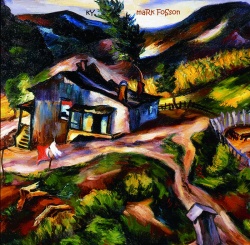
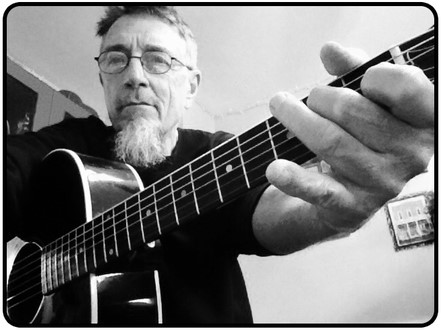











































![Eilean [02]](https://wajobu.files.wordpress.com/2014/04/eilean-02.jpg?w=300&h=300)










